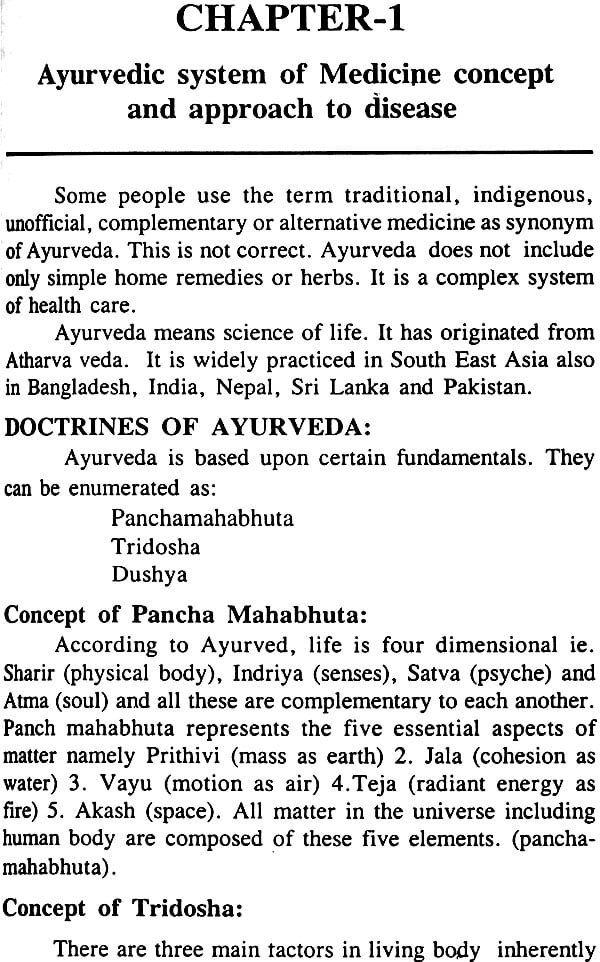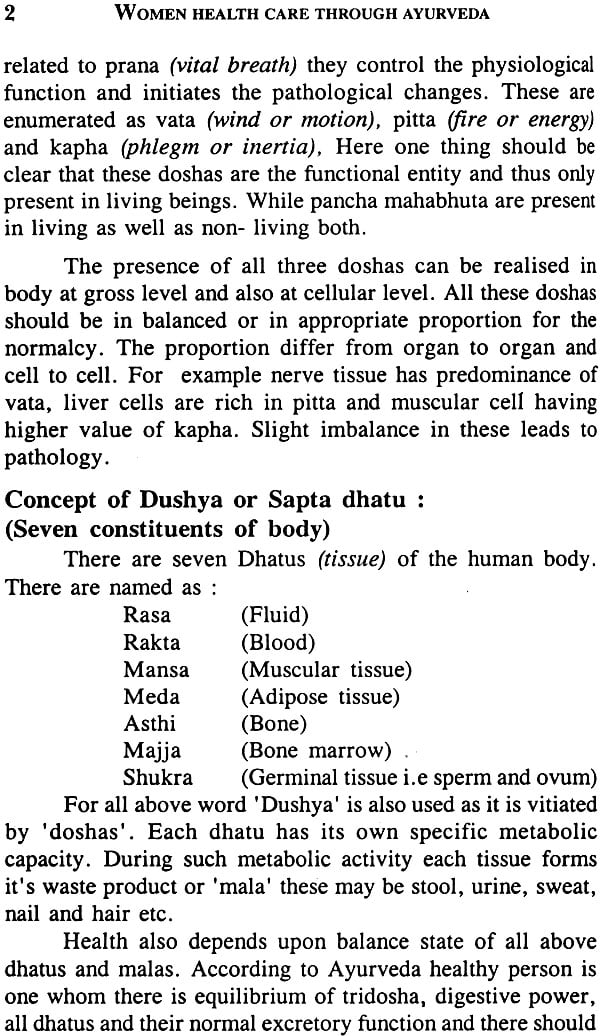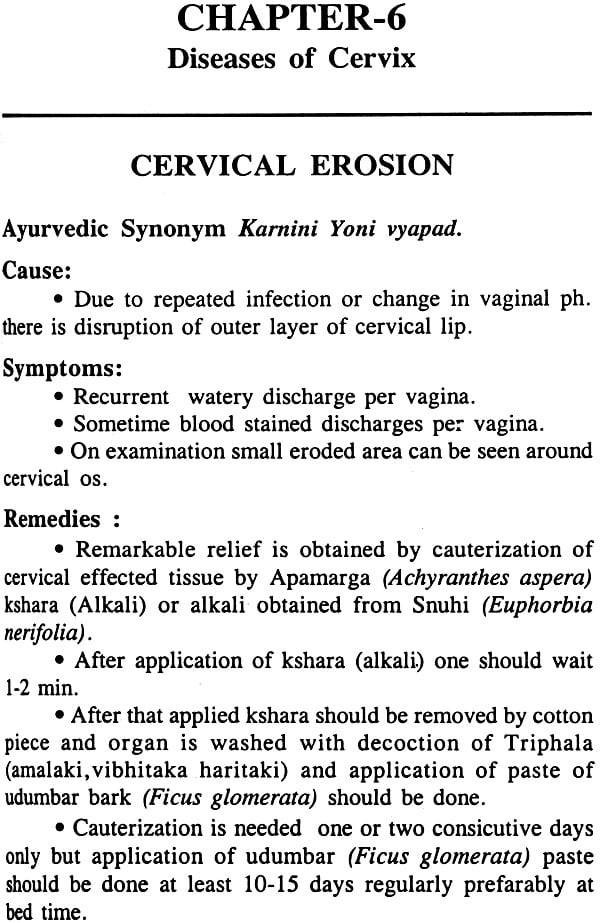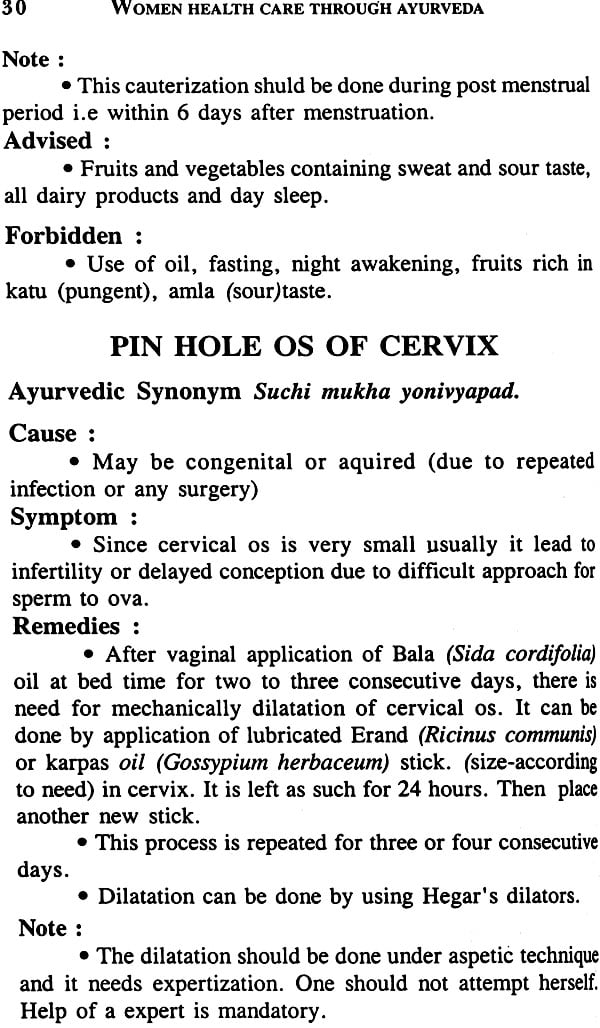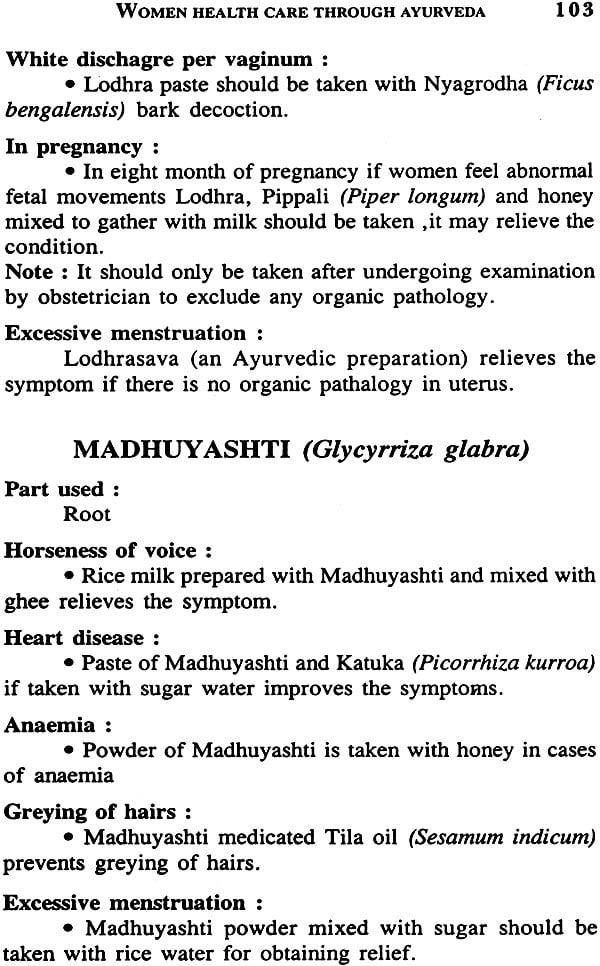
Women Health care through Ayurveda
Book Specification
| Item Code: | IDF942 |
| Author: | Dr. Manjari Dwivedi |
| Publisher: | Chowkhamba Krishnadas Academy |
| Language: | English |
| Edition: | 2007 |
| ISBN: | 9788121802342 |
| Pages: | 121 |
| Cover: | Paperback |
| Other Details | 9.0 inch X 6.0 inch |
| Weight | 130 gm |
Book Description
Preface
Women's health is the pivot not only for the healthy and happy status for her family, rather to the whole society or event to the nation at large. Though the importance of health care was recognised by the earliest man, and consistent efforts were being made by subsequent generations, yet twentieth century has evidenced maximum cry on this front. To-day the health delivery systems more so in developing countries are at great variance, on one side big hospitals located in palacial buildings, equipped with most modern technology, medicines and trained manpower are catering to the needs of few who can afford and on the other the sizeable chunk of population is left to the mercy of almighty with almost negligible health care facilities provided to them. The paradox is not new it has existed from time immemorial, of course now there is open acceptance of this difference by health planners and various agencies, governmental and non-governmental are pooling their might to cope with this. It is in this attempt that the health planners have recognised the values of traditional system/remedies and have accepted that without exploring this source the solution of health problems will remain in mirage.
Ayurveda, the oldest system of medicine, still serving major part of society in the countries like India, Shri Lanka and Nepal etc. has dealt each and every aspect of health, but the available books are voluminous, specific topics/subjects are scattered in almost whole compendium and the language of original books (Sanskrit) or its translations (Hindi / English)are not intelligible to common health worker or public. It is the need of present society to translate this age old, time-tested knowledge in systematic, simple, intelligible language. The book "woman health care through Ayurveda" by Dr. (Mrs.) MANJARI DWIVEDI is a noble attempt in this direction.
| Preface | v-vi | |
| Introduction | vii-ix | |
| 1. | Ayurvedic System of medicine concept and approach | 1-7 |
| 2. | Women their constitution Ahar(Diet) And Vihar(Regimen) | 8-14 |
| 3. | General structure and female body | 15-20 |
| External genital organs | 15 | |
| Internal genitals organs | 16 | |
| Physiology of women life | 17 | |
| Status of different doshas(Tria complex ) in different epochs of women life | 18 | |
| 4. | Diseases of vulva | 21-23 |
| Swelling in vulva | 21 | |
| Pruritis in vulvae (itching in vulva) | 22 | |
| 5. | Diseases of vagina | 24-28 |
| Vaginitis | 24 | |
| Pain in vagina | 25 | |
| Genital herpese | 27 | |
| Dryness in vagina | 28 | |
| 6. | Diseases of cervix | 29-31 |
| Cervical erosion | 29 | |
| Pin hole of cervix | 30 | |
| 7 | Diseases of Pelvis, Adenaxae and uterus | 32-36 |
| Pelvic inflammatory disease | 32 | |
| Salpingitis | 33 | |
| Ovarian cyst | 34 | |
| Prolapse uterus | 35 | |
| 8. | Discharges through vagina | 37-39 |
| Leucorrhoea | 37 | |
| Foul smelling discharges | 38 | |
| 9. | Menstrual disorders | 40-43 |
| Pre menstrual syndrome | 40 | |
| Scanty periods | 41 | |
| Excessive menstruation | 42 | |
| 10. | Other female diseases | 44-48 |
| Low backache | 44 | |
| Disorder related to sexuality | 44 | |
| Nymphomania | 44 | |
| frigidity | 45 | |
| Breast swelling | 46 | |
| AIDS | 47 | |
| Infertility | 47 | |
| 11. | Family planning methods | 49-50 |
| Management of postmenopausal period | 49 | |
| 12. | Pregnancy care | 51-55 |
| Month wise dietetic regimen | 52 | |
| Regimen harmful during pregnancy | 54 | |
| General code of conduct | 54 | |
| 13. | Few common problems during pregnancy and their management | 56 |
| 14. | Care of puerperium | 57 |
| 15. | Few common diseases | 58-75 |
| Achne (Yuvan Pidica) | 58 | |
| Anemia(Pandu) | 59 | |
| Anorexia( Aruchi) | 60 | |
| Anxiety(Udveg) | 60 | |
| Burning micturation(Mutra daha) | 61 | |
| Burning feet syndrome (Pad daha | 62 | |
| Cough(Kasa) | 63 | |
| Cold(Pratishyaya) | 64 | |
| Constipation(Vibandh) | 65 | |
| Crack sole | 65 | |
| Diabetes mellitus(Madhumeha) | 66 | |
| Diarrhoea(Atisar) | 67 | |
| Excess sweating(Swedadhikya) | 68 | |
| Fair complexion | 68 | |
| fever (Jwara) | 68 | |
| Greying and falling of hairs | 69 | |
| Hyperpigmentation(Vyang) | 70 | |
| Hypertension(Uccha raktachap) | 70 | |
| Jaundice(Kamala) | 71 | |
| Joint Pain (Ama vata) | 72 | |
| Laryngitis(Swarbhanga) | 73 | |
| Obesity(Medoroga) | 74 | |
| Oedema(Shotha) | 75 | |
| 16. | Protection of different organs | 76-90 |
| Herb protecting liver | 76 | |
| Kalmegha(Androgaphis paniculata | 76 | |
| Parijat(Nyctanthes arbor-tristis) | 77 | |
| Kalamachi(Solanum Nigrum) | 78 | |
| Daru haridra(Berberis Aristata) | 79 | |
| Amalaki (Emblica officinalis) | 80 | |
| Herbs protecting Kidney | 81 | |
| Varun(Crataeva Nurvala) | 82 | |
| Kulatth (Dolichos bitlorus) | 83 | |
| Pashan bhed (Boerhavia diffusa) | 84 | |
| Gokshuru (Tribulus terrestris) | 85 | |
| Herbs protecting heart | 86 | |
| Arjun (Terminalia Arjuna) | 86 | |
| Kapoor (Cinramomum camphora) | 87 | |
| Herbs useful for respiratory system | 88 | |
| Kantakari(Solanum nigrum) | 88 | |
| Vasa (Adhatoda Vasica) | 89 | |
| 17. | Few common herbs and their uses | 91-108 |
| Amalaki (Emblica officinalis) | 91 | |
| Apamarga (Achyranthes aspera) | 92 | |
| Atibala (Abutilon indicum) | 92 | |
| Badari (Ziziphus mauritiana) | 93 | |
| Bala (Sida cardifolia) | 93 | |
| Bhumyamalki(Phyllanthus urinaria) | 94 | |
| Chandana (Santalum album) | 94 | |
| Daru haridra (Berberis aristata) | 95 | |
| Dhataki(Woodfordia fruticosa) | 95 | |
| Dhatura (Datura metal) | 96 | |
| Dashamula (Group) of ten herbal root) | 96 | |
| Eranda (Ricinus communis) | 97 | |
| Guduchi(Tinaspora cordifolia) | 98 | |
| Japa (Hibiscus rosasinensis) | 98 | |
| Jatamansi(Nordostachys jatamansi) | 99 | |
| Kumari(Aloe Vera) | 99 | |
| Karpasa(Gosypium herbaceum) | 100 | |
| Kulatha (Dollichos biflorus) | 101 | |
| Kalukalabu(Lagenaria siceraria) | 101 | |
| Lahsuna, Garlic (Allium sativum) | 102 | |
| Lodhra (Symplocos racemosa) | 102 | |
| Madhuyashti (Glycyrriza glabra) | 103 | |
| Manijshtha (Rubia cordifolia | 104 | |
| Nag Kesara(Mesua ferrea) | 104 | |
| Nimba (Azadirachta indica) | 105 | |
| Shalmali(Salmalia malabarica) | 106 | |
| Shatavari (Asparagus recemosos) | 106 | |
| Tila (Sesamum indicum) | 107 | |
| Udumbara (Ficus Glomerata) | 107 | |
| Vansha or Bans or bamboo(Bambusa arundinacea) | 108 |
